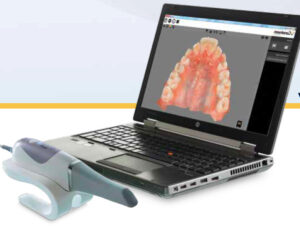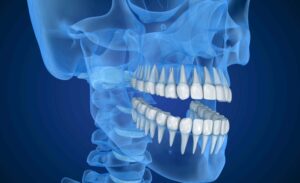Header logo
header top contact widget
Blog Archives
Recent Posts
Categories
Archives
- September 2024
- August 2024
- July 2024
- June 2024
- May 2024
- April 2024
- March 2024
- February 2024
- January 2024
- December 2023
- November 2023
- October 2023
- September 2023
- August 2023
- July 2023
- June 2023
- May 2023
- April 2023
- March 2023
- February 2023
- January 2023
- December 2022
- November 2022
- October 2022
- September 2022
- August 2022
- July 2022
- June 2022
- May 2022
- April 2022
- March 2022
- February 2022
- January 2022
- December 2021
- November 2021
- October 2021
- September 2021
- August 2021
- July 2021
- June 2021
- May 2021
- April 2021
- March 2021
- February 2021
- January 2021
- December 2020
- November 2020
- October 2020
- September 2020
- August 2020
- July 2020
- June 2020
- May 2020
- April 2020
- March 2020
- February 2020
- January 2020
- December 2019
- November 2019
- October 2019
- September 2019
- August 2019
- July 2019
- June 2019
- May 2019
- April 2019
- March 2019
- February 2019
- January 2019
- December 2018
- November 2018
- October 2018
- September 2018
- August 2018
- July 2018
- June 2018
- May 2018
- April 2018
- March 2018
- February 2018
- January 2018
- December 2017
- November 2017
- October 2017
- September 2017
- August 2017
- July 2017
- June 2017
- May 2017
- April 2017
- March 2017
- February 2017
- January 2017
- December 2016
- November 2016
- October 2016
- September 2016
- August 2016
- July 2016
- June 2016
- May 2016
- April 2016
- March 2016
- February 2016
- January 2016
- December 2015
- November 2015
- October 2015
- September 2015
- August 2015
- July 2015
- June 2015
- May 2015
- April 2015
- March 2015
- February 2015
- January 2015
- December 2014
- November 2014
- October 2014
- September 2014
- August 2014
- July 2014
- June 2014
- May 2014
- April 2014
- March 2014
- February 2014
- January 2014
- December 2013
- November 2013
- October 2013
- September 2013
- August 2013
- July 2013
- June 2013
- May 2013
- April 2013
- March 2013
- February 2013
- January 2013
- December 2012
- November 2012
- October 2012
- September 2012
- August 2012
- July 2012
- June 2012
Arthritis? Recommit Yourself To Having Good Oral Health.
Posted on Jun 20, 2021 by William J. Claiborne, DDS MS
According to the Centers For Disease Control & Prevention (CDC), over 47 percent of American adults are living with some level of gum disease. For those age 65 and older, this figure jumps to 70 percent.
These concerning statistics are nothing to ignore. Although gum disease is so common, it increases risks that go far beyond the mouth. Over the years, research has tracked many diseases and conditions that correlate with gum disease bacteria. The inflammatory reactions triggered by these infectious bacteria have been linked to heart disease, stroke, some cancers, diabetes, preterm babies, and impotency.
Research has also shown a notably close relationship between gum disease and rheumatoid arthritis (RA). These studies have been ongoing for many years, and the findings should be concerning to all adults.
RA is a debilitating, painful disease that destroys joints. RA often emerges gradually, initially causing morning stiffness and weak, sore muscles. As inflammation from RA worsens, joints become swollen. Joints become achy and stiff most often in the fingers, wrists, elbows, hips, knees, ankles, toes and neck. Unfortunately, there is no cure for RA.
On a positive note, studies have shown that treating RA patients who have periodontal disease helps to improve RA symptoms. It is felt that this occurs because of a lighter burden of oral inflammation to the body’s immune system.
Below are some of the findings you may want to review. First, however, it’s important to understand how gum disease begins and some signs and symptoms.
In the initial stage of periodontal (gum) disease, known as gingivitis, the gums may bleed when brushing. Bad breath is more frequent and the gums may be tender or swollen. As the disease progresses, the gums turn red and may pull away from the base of some teeth.
Bad breath becomes persistent and pus pockets may form at the base of some teeth. As the infectious bacteria attack the bone structures that support tooth roots, teeth will begin to loosen and may need removal. Gum disease is the leading cause of adult tooth loss in the U.S.
In addition to the devastating damage in the mouth, the infectious bacteria of gum disease can enter the bloodstream through diseased gum tissues, causing the inflammatory triggers that activate serious health problems, such as RA.
Years ago, researchers noticed an RA-perio trait among people with rheumatoid arthritis. While RA sufferers had gum disease more often, they observed that people with gum disease tended to have RA more often.
As researchers delved deeper into the connection, it appeared that the association is much more complicated than previously thought. Findings now suggest that oral bacteria could actually be a cause of rheumatoid arthritis.
In the past, doctors felt that periodontal disease was a result of RA itself since stiff, painful hands make it challenging to maintain good oral hygiene. They also suspected that medications prescribed to treat RA could be a factor since the drugs, which suppress the immune system, inhibited the body’s ability to fight harmful oral bacteria.
Both conditions cause chronic inflammation in tissues that connect to bone with both diseases having a similar inflammatory trigger. Even more similar is the particular species of bacteria found in periodontally-diseased tissues when compared with tissues around arthritic joints. In one study, a particular pathogen associated with periodontal disease was found to activate the same destructive process of rheumatoid arthritis.
In 2017, study findings were released by Johns Hopkins University Division of Rheumatology, which noted evidence that the tissues in the mouth of a periodontally-compromised individual and the tissues of the joint in RA have a number of likenesses. Research has also shown a genetic link between the two.
Above all, these findings reinforce how oral health correlates closely to our overall health. When you consider how the presence of gum disease can significantly increase your risk for serious health conditions, having good oral health should be a priority for every American.
What can you do to lower your risks for tooth loss and contributing to (or worsening) serious health problems? Recommit yourself to thorough oral hygiene at home and having twice-a-year exams and cleanings.
If you have signs of gum disease, have treatment at your earliest convenience. Gum disease will only worsen and requires more treatment time and expense as it progresses.
Call 828-274-9440 to schedule an examination, or begin with a consultation to discuss your needs.
https://www.hopkinsrheumatology.org/2017/01/gum-disease-linked-to-rheumatoid-arthritis/
https://www.cdc.gov/oralhealth/conditions/periodontal-disease.html
https://pubmed.ncbi.nlm.nih.gov/17551378/
‘Perio’ Dental Terms
Posted on Jun 14, 2021 by William J. Claiborne, DDS MS
Occasionally, I like to remind readers of the benefits of thorough communication in dental offices, and especially in dental specialists‘ offices. When unfamiliar terms are used by the doctor or staff, it can easily leave patients in a confused state.
When patients feel less involved in their dental situation, they struggle to make decisions that are in their best interests, including decisions that can greatly affect long-term dental health.
In our Asheville periodontal dental office, we pride ourselves on providing a comfortable, respectful environment to our patients. We find that even patients who are anxious or “jittery” about dental procedures relax when they feel fully versed as to their needs, how they may have occurred, and their options in resolving the problem(s).
However, some dentists, hygienists, and dental assistants can become “immune” to the foreign nature of some terms. They tend to throw them out without realizing the terms are going askew rather than being absorbed by the patients to whom they’re communicating.
Ideally, any term or explanation that isn’t clear will prompt the patient to ask for clarity.
Below are some fairly common terms you may hear used by your dental caregivers. Hopefully, these will help you better grasp the unique situation you have that brought you to the dental chair in the first place.
PERIODONTAL (or PERIO): Defined, this means relating to or affecting the structures surrounding and supporting the teeth. Generally, however, this refers to the gum tissues in the mouth.
GINGIVITIS: This initial stage of periodontal disease causes inflammation of the gums, typically because a film of plaque (consisting of oral bacteria), has accumulated on teeth. Gingivitis is a non-destructive type of gum disease but, untreated, can progress to more serious levels that are highly destructive.
PERIODONTITIS: This inflammatory reaction is triggered by a buildup of bacteria in dental plaque. This stage of gum disease leads to a loss of tooth-supporting bone, formation of deep “pockets”, and eventually tooth loss.
PROPHY: Also known as a dental cleaning, a prophy is a treatment that involves the cleaning and polishing of tooth surfaces to control bacteria on the teeth and just below the gum line. A prophy is recommended every six months to maintain healthy gums and teeth.
BUCCAL: This is the cheek-side of teeth. For front teeth, it may also be referred to as the facial surface.
LINGUAL: The opposite of buccal, this refers to the surface of teeth that face the tongue.
MESIAL: This is the surface of a tooth that is closest to the midline of the face.
OCCLUSAL: This is the chewing surface of back teeth.
POCKETS: This is a small opening in gum tissues between the gums and the teeth where the gum should normally fit snugly against the tooth. A pocket holds bacteria, which can allow infection to penetrate below the gum line.
DEBRIDEMENT: When a buildup of plaque and calculus becomes imbedded around the gums and between teeth, a dentist or dental specialist often must remove it in order to perform a thorough oral exam.
ROOT PLANING: This is a non-surgical procedure for the removal of plaque, hardened tartar ( calculus), and/or stains from a patient’s teeth and tooth roots. This is typically performed to reach oral bacteria that has moved below the gum line.
MAXILLA: This is your upper jaw, which holds upper tooth roots. This bone is part of the skull structure and does not move.
MANDIBLE: This is the lower jaw bone, where lower teeth are held. This bone is hinged to the skull and moves up and down and slightly sideways, made possible by the temporomandibular joints (TMJ).
ARCH or RIDGE: In dentistry, this refers to the raised, gum covered “u” that supports the upper or lower teeth. For example, a “full arch of teeth” indicates a complete row of all upper or lower teeth.
Our goal is to create informed patients who are active in their care and decision-making process for having excellent dental health.
Research has shown that a healthy mouth supports a healthy body. It has proven that oral health is intricately connected to our whole health. By minimizing the level of bacteria in the mouth, you can avoid many problems associated with the teeth and gums AND give your overall health added support.
Bacteria accumulation can sneak up on you. Gum disease symptoms begin with tender gums that may bleed when brushing. The gums may become red (versus a healthy pink color) and pull away from the base of teeth. Bad breath becomes more frequent and some swelling may occur.
As it progresses, periodontal disease can cause deep, pus filled pockets to form on the gums. The gums may loosen from their grip around teeth and bad breath is persistent. Bleeding gums may occur easily; even eating may prompt bleeding.
Eventually, the bone and tissue structures that support teeth are so damaged that the foundation for teeth gives way and teeth may need to be extracted. Gum disease is the nation’s leading cause for adult tooth loss.
If gum disease exists, it will only worsen without treatment. Please contact our Western NC periodontal office to arrange a consultation or a complete examination. A periodontist specializes in the treatment of oral tissues and is your best choice for restoring a healthy mouth.
Call 828-274-9440. Let’s get you smiling confidently, and often!


